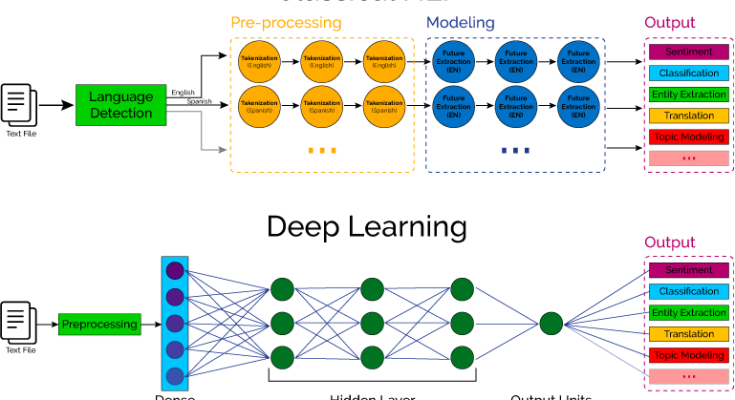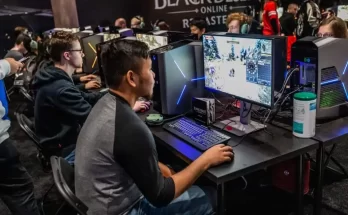As technology advances, so does the complexity and immersion of video games. One crucial aspect that contributes to the overall gaming experience is realistic and natural dialogue interaction between players and characters. This is where natural language processing (NLP) comes into play, revolutionizing game dialogue by utilizing neural networks. In this article, we will explore the role of neural networks in NLP for game dialogue, discussing their benefits, challenges, and future prospects.
Understanding Natural Language Processing (NLP)
Natural Language Processing (NLP) is a subfield of artificial intelligence that focuses on the interaction between computers and humans through natural language. It involves the analysis and comprehension of human language patterns, enabling machines to understand, interpret, and respond appropriately. NLP plays a significant role in various applications, including virtual assistants, machine translation, sentiment analysis, and, of course, game dialogue.
The Benefits of Neural Networks in Game Dialogue
Neural networks, a key component of NLP, have brought countless benefits to game dialogue. Here are some of them:
1. Enhanced Realism
With neural networks, game developers can create more authentic and realistic dialogues. By training the networks with vast amounts of text data, they can capture the nuances and subtleties of human language, resulting in more lifelike conversations between players and non-player characters (NPCs). This heightened realism enhances immersion and improves the overall gaming experience.
2. Contextual Understanding
Neural networks excel at understanding contextual clues, which is vital for effective game dialogue. Through the analysis of surrounding text and previous interactions, these networks can interpret the player’s intent and generate appropriate responses. This contextual understanding allows for dynamic and engaging conversations, making the game feel more interactive and personalized.
3. Adaptive Learning
One of the remarkable capabilities of neural networks is their ability to adapt and learn from user interactions. By continuously analyzing player input and feedback, these networks can fine-tune their responses, improving over time. This adaptive learning enables NPCs to provide more accurate and tailored responses, making the game world feel truly responsive and immersive.
Challenges in Implementing Neural Networks for Game Dialogue
While neural networks bring numerous benefits, there are also challenges to overcome when implementing them for game dialogue:
1. Data Volume and Quality
Training neural networks requires significant amounts of high-quality data. Acquiring and curating large datasets for game dialogue can be a challenging and time-consuming task. Additionally, ensuring the quality and diversity of the data is crucial to avoid biases and limitations in the neural network’s understanding and responses.
2. Real-Time Performance
In a gaming environment, dialogue responses must be generated quickly to maintain the flow of conversation. Achieving real-time performance with neural networks can be demanding, as their computationally intensive nature may introduce delay. Balancing the need for both accuracy and speed is a challenge that developers face when implementing neural networks in game dialogue systems.
3. Contextual Complexity
Creating a dialogue system that can handle the intricate web of contextual information is another challenge. Understanding the player’s intent and responding appropriately within the game’s narrative context requires robust neural network architectures. Developing models that can capture and process such complexity is an ongoing area of research and development in the field of game dialogue.
The Future of Neural Networks in Game Dialogue
With the continuous advancements in NLP and neural network techniques, the future of game dialogue holds great promise. Here are some potential future developments:
1. Personalized Gaming Experiences
Neural networks have the potential to provide highly personalized gaming experiences. By analyzing player preferences, gameplay behavior, and individual linguistic styles, dialogue systems can adapt their responses to fit each player’s unique gaming journey. This personalization can result in more immersive and emotionally compelling interactions.
2. Dynamic Language Generation
As neural networks become more sophisticated, we can expect dialogue systems capable of generating dynamic and contextually rich language. These systems will be able to go beyond pre-defined dialogue options, producing responses that feel more natural and tailored to the player’s specific interactions and choices within the game world.
3. Multi-Modal Dialogue
The integration of neural networks with other emerging technologies, such as computer vision and speech recognition, offers exciting possibilities for multi-modal dialogue in games. This means that players could engage in conversations not only through text but also through voice or even facial expressions, further enhancing the immersion and interactivity of game dialogue.
In conclusion, neural networks have transformed game dialogue through their ability to understand and respond to natural language. With improved realism, contextual understanding, and adaptive learning, these networks bring games closer to the ideal of truly immersive and dynamic conversations. Although challenges remain, the future looks promising, with personalized experiences, dynamic language generation, and multi-modal dialogue on the horizon.



